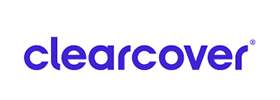It’s a term thrown around a lot, and it sounds important: vesting. As in, being fully vested — that sounds pretty good and it is.
According to the IRS, being vested in a retirement plan means ownership. All employee contributions to a retirement plan are 100% fully vested — the employee owns everything he or she puts in.
However, employers usually provide a match of a certain percentage of employee contributions.
Matching contributions
Employers match contributions made by employees in different percentages. An employer might say: If you put 6% of your paycheck into the 401(k), then we’ll match your contribution by 50%. So suppose your 6% equals $3,000. Then the employer will put in $1,500. That would be an unusually generous match. Typically, an employer may match 3% of the first 6% of the employee’s salary. That equals a 9% contribution — still pretty good, especially over the long term.
They key idea, though, is that the employer sets a certain match percentage. The employer may also have rules about when their contributions are fully owned (or vested) by the employee.
Vesting rules
The employer, along with the fund managers, decides how much of the match the employee owns and when.
Newer employees may start out at lower percentages, but they become fully vested in time.
For example, an employee may become 20% vested in the company match after two years, meaning the employee owns their personal contributions plus 20% of the company match. Many 401(k) plans work out vesting in tiers. The longer you stay with the company, the more of the company contribution you own. An employee might become fully vested in, for example, six years. Then the employee owns 100% of the matching contribution.
Sometimes 401(k)s are set up so that an employee becomes 100% vested at a specific time — say after 2 years. Then they own all the matching funds on one day.
Being fully vested
The good thing about being fully vested is that you own all the money you put in and all the money your boss matches. (Plus, you own all the money that grows over time.) That means you can take the money with you if leave the company or retire.







































